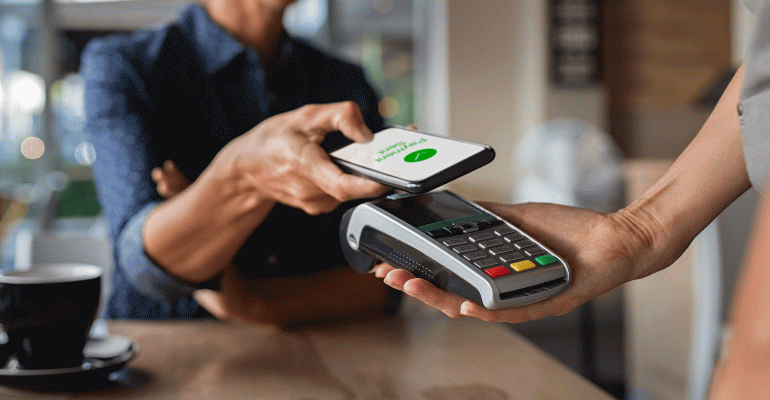Loyalty programs with exclusive rewards and benefits incentivize restaurant customers to return repeatedly, forging a strong bond between diners and a brand. Diners who sign up for programs may be more likely to order additional items or visit more frequently to reach their reward, increasing sales and the bottom line for a restaurant.
These programs are especially important in an industry that’s on the rebound. According to the National Restaurant Association, 47% of operators this year expect competition in the industry to be more intense than in 2022. What’s more, the loyalty realm by itself is extremely competitive: Per a Deloitte survey, more than two-thirds of consumers participate in two or more restaurant loyalty programs, and nearly half (47%) of loyalty members use their memberships several times a month.
The good news is that today’s technology and a strong focus on the diner experience can help drive loyalty. Let’s look at five key ways to do just that.
Personalize the experience with diner insights
Loyalty programs can give restaurant operators valuable insights into customer behavior and preferences, providing myriad operational benefits. For instance, with today’s technologies and platforms, restaurants can gather data on which menu items are most popular, which marketing efforts are most effective, and which customers provide the most business. This data can be used to improve the menu and promotional strategies, leading to a better overall diner experience and increased return on investment.
With such insights, the diner experience can be enhanced with personalized recommendations based on past orders, preferences, and dietary restrictions. This creates a feeling of exclusivity and special treatment, which can lead to increased loyalty. It’s why large chains like McDonald’s and independent restaurants such as Indiana-based The 1894 Lodge have invested considerably in customer insights in recent years.
Use points creatively to drive sales
Restaurant operators know all too well that most days won’t be as busy as Fridays and Saturdays when weekend foot traffic provides a spike, which is why Kansas-based Oscar's Authentic Mexican Grill uses a points-based loyalty program to drive sales on off days. For instance, customers earn double points on Tuesdays, which can be humdrum compared to later in the week. On Oscar’s first promoted double-point Tuesday, it saw a 100% increase in sales over previous Tuesdays.
Loyalty points programs, which also allow restaurants to customize sign-up incentives, set accrual and redemption rates, and offer birthday rewards, are not exactly new to restaurant operators. But when applied creatively, Oscar’s demonstrates that loyalty points programs can make a significant difference during times that otherwise do not move the needle significantly.
Don’t make ’em wait
“Hangry” won’t drive loyalty, and research has shown that diners perceive a wait time as longer than it actually is when they have nothing to do. But there are a couple of excellent ways to circumvent this situation while driving loyalty.
First, restaurant operators can take a page out of Chili’s playbook and offer loyalty members free chips and salsa or a non-alcoholic beverage with every visit. (The brand also encourages members to earn points toward free menu items.) Second, brands such as Taco Bell and Roc ‘N’ Ramen have leaned into dine-in mobile ordering, allowing customers to use a kiosk screen or their phone to get their appetizer, drinks, main course, dessert, and post-meal coffee or tea without having to wait. This is important, as a 2022 study showed that convenience and digital features can drive consumer loyalty for restaurants.
Meet them where they are
If restaurant operators want diners to come back again or join a loyalty program, they should have a presence on multiple digital platforms. According to a Toast survey of over 950 restaurant guests, 26% of respondents who order delivery do so via a website or app. While 23% of restaurant goers say they order takeout at the restaurant counter, 22% order takeout via an app or phone. Though word of mouth is still the largest driver for restaurant discovery, social media and apps can have a large impact on discovery.
These digital platforms can help a restaurant meet customers where they are located — even if they are not at home, the office, or a friend’s house. Via marketing, operators need to inform customers about this delivery-anywhere service. For instance, here’s a potential message to get the word out: If you are in the park or at the beach, no problem! Just input the nearest address, and your food will be delivered within steps of where you are.
Further, off-premises dining is becoming a game where convenience and options are only growing, and this idea is on restaurant operators’ minds. Per a Toast industry survey, off-premises dining was cited as one of restaurants’ top 10 areas of focus for 2023.
Implement credit-card-linked tools
Even when customers become loyal, it is up to restaurants to continue making their experiences better to ensure they keep coming back. With that in mind, card-linked programs make it simpler for diners to accrue loyalty points with just a swipe of their credit card — they don’t need to carry a separate card or sign in when they pay after every meal. It’s early days, but major brands like Dunkin’ have recently started testing card-linked offers.
And it’s common sense that the easier a loyalty program is to use, the more people will use it — which will drive patronage. According to Merkle, 79% of consumers are more likely to do business with a brand due to its loyalty program.
The point, if you will, is to keep customers coming back. So, in 2023 and beyond, restaurants should lean into loyalty programs in multiple ways and ensure they are powered by the best technology available — otherwise, their increasing number of competitors will.
AUTHOR BIO
Teddy Tsang is vice president of product marketing at Toast. He has spent the past six years working in restaurant technology after previous career stops with organizations across sectors in executive management roles.





